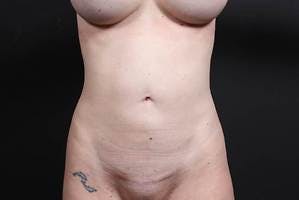There is a lot of confusion about the various abdominal type hernias that can occur. In this blog post we will review the most common type of abdominal wall hernias, how they most frequently occur, and how they can be repaired.
What is a hernia?
Lets first start by discussing what a hernia is. There are medical definitions of a hernia but we can simply describe it in a way that makes sense for everyone in the real world. A hernia is a weakening in that part of the body. Think of it as a bubble in a car tire. That part of the tire is weaker and the air pressure inside can push out that area more than the rest. This “weakening” can result from the thickness of the tissue getting thinner or it can be from the tissue losing its strength. The second part can be thought of as a new versus an old rubber band. The old rubber band has the same thickness but is not as strong as it used to be and therefore stretches out further with the same amount of force applied.
What is Rectus Diastasis?
Rectus Diastasis: The space between the rectus abdominal muscles, commonly referred to as the six-pack muscles, has increased. This occurs when the connective tissue holding the six-pack muscles near one another stretches and thins. When this occurs, the six-pack muscles drift farther apart from each other because the oblique muscles, the muscles on the side of our abdomen that that go more side to side, pull the six-pack muscles away from each other—each towards its own side. This process essentially results in a mild hernia or bulge in the abdominal wall. This hernia can be called a ventral hernia (more about this next) but since there is no discreet break of the connective tissue it has been labeled rectus diastasis. They are really one and the same, only to a different extent.
What is a Ventral Hernia?
A ventral hernia is an abdominal hernia. The “ventral” part comes from the description of where it occurs. Ventral refers to the front part of the abdomen and makes the assumption that the most “front” part of the abdomen will be in the middle of the abdomen. So, ventral hernia refers to a hernia in the middle of the abdomen along the connective tissue between the six-pack muscles. Sometimes you may hear “ventral incisional hernia”. This is a hernia in the middle of the abdomen from a prior abdominal surgery—hence the “incisional” part.
What is an “outie” belly button?
An “outie” belly button is also known as a belly button hernia. A belly button hernia, in turn, is a weakening of the connective tissue under the belly button. Think of it as rectus diastasis or ventral hernia just under the belly button. When this occurs, fat from inside the abdomen usually pushes up into the belly button stalk and lifts the deep part of the belly button making an “innie” into and “outie”.
So how are these types of hernias repaired?
There are two main ways to repair a hernia.
- Use of some type of product to patch the hernia
- Use of the tissue themselves to repair the weakness
Products that can be used generally fall into either synthetic mesh or natural products such called acellular dermal matrix (ie animal or cadaver skin). This is sometimes done when the tissues are not strong enough to hold their own repair or as additional reinforcement.
Whenever able, the use of the bodys own tissues is preferred. The idea is mush like repairing a rip in a pair of jeans. You can sew the edges together or you can use a patch to plug up the tear.
Regardless of what method is used, access to the hernia is needed. This is where things become interesting. Large incisions can be used for direct access but they should be avoided unless the incision actually makes the area look better. That is, a large vertical incision can be used to fix a ventral hernia if tissue is also removed and tightened at the same time. Otherwise, smaller incisions hidden in the belly button or in the bikini area are used to repair rectus diastasis, ventral hernias, and “outie” belly buttons (belly button hernia).
The following are some photos of what an endoscopic hernia repair and an umbilical hernia repair look like.



